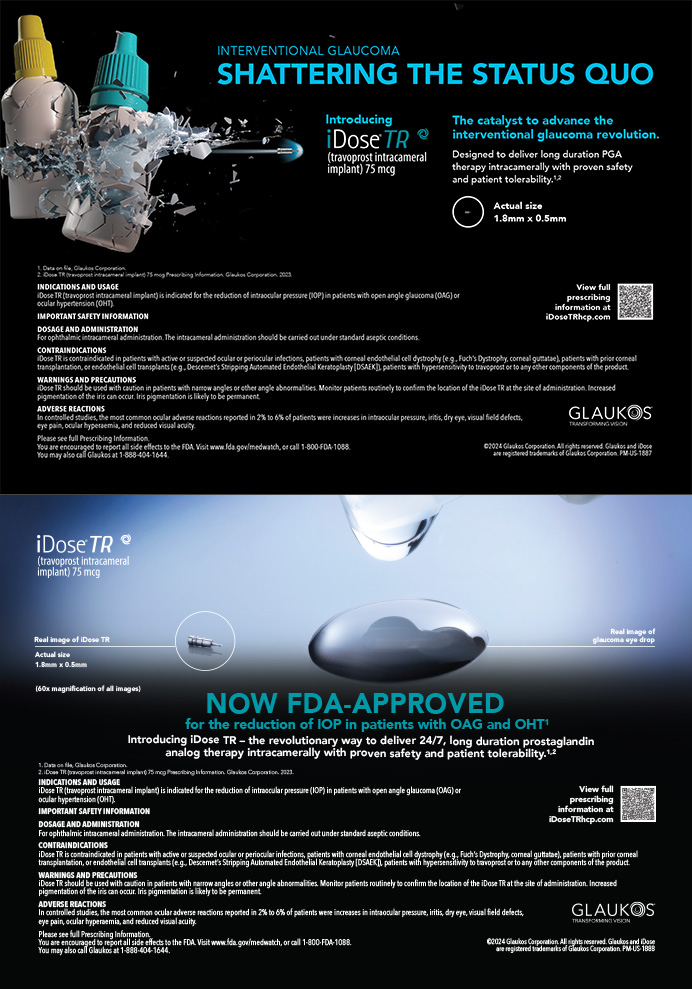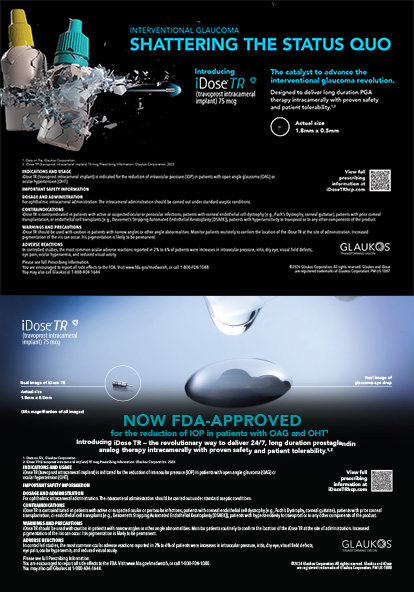Since my residency days, it has been my desire to perform all ocular surgery in the office with a single instrument (a laser with real-time diagnostics and intraprocedural measurements) and achieve an emmetropic result in every case. With the US approval of the femtosecond laser for cataract surgery, I believe ophthalmology is on track to fulfill my dreams.
TRUST THE TECHNOLOGY
Like in a Google driverless car, it is scary at first to let go and see the computer-driven laser perform the defining steps of cataract surgery, in particular, the capsulorhexis, as I remember my first moment abroad years ago many iterations before the present-generation upgrades.
Certainly, there are financial considerations regarding the feasibility of using only one laser for all procedures, but I am suggesting that femtosecond laser technology may become the standard of care in certain surgical cases very soon.
Currently, four laser systems are approved in the United States for performing corneal incisions, anterior capsulotomies, limbal relaxing incisions, and lens fragmentation in cataract procedures. The laser’s advantages include improved and consistent safety and predictability profiles.1-3
In eyes with pseudoexfoliation of the lens capsule, minimally subluxated cataracts, or mature cataracts, performing the capsulorhexis can be our Achilles’ heel. No matter how talented we are, this is when we become worried, because the capsule may tear in the wrong direction, and then the case will be out of control. In these situations, having something as reliable, consistent, and predictable as the laser takes the worry away. A well-planned and well-executed capsulorhexis in an eye with a mature cataract not only sets the stage for the surgery, but it also decompresses the capsular bag, thus avoiding that ominous sign of impending disaster, the Argentinian flag. In the setting of pseudoexfoliation, the laser’s use makes the case more controlled and safe. In eyes with partially subluxated cataracts, we can create a more perfect capsulorhexis to allow the lens’ alignment and plan for a capsular tension ring if needed (Figure 1).
The cases that I have described are those for which I feel that using a femtosecond laser is almost mandatory.
OTHER INDICATIONS
Lesser indications that could necessitate the laser’s use include patients with anterior corneal dystrophy and Fuchs dystrophy. In these eyes, creating limbal relaxing incisions may rip the loose epithelium, causing an abrasion and a foreign body sensation. The advantage of creating intrastromal laser incisions is that it will maintain a tightly apposed, mostly intact epithelium.4 I find that the limbal relaxing incisions are created in a predictable manner and can be opened the next day in a controlled fashion with a specially designed instrument. (The author is currently designing a laser cataract instrument set with Bausch + Lomb.)
CASE EXAMPLE
I was recently referred a patient with nystagmus, high hyperopia (+9.00 D sphere), Fuchs dystrophy, small pupils, mature cataracts, narrow angles, and shallow chambers. He was also hearing impaired and had head tremors and could not speak due to a tracheostomy. My desire to apply the femtosecond laser to stabilize the patient’s moving eyes by docking him to the interface to create a predictable capsulorhexis in an eye with a very shallow chamber became so obvious to me that, had I not mentioned it to the patient, I do feel I would have done him a disservice.
CONCLUSION
While most of our discussions on national and international podiums are about including this laser as an integral part of premium cataract surgery, I would like to suggest that it is an undisputed advantage in select cases to the point of possibly becoming indispensable.
Arun C. Gulani, MD, is the director of the Gulani Vision Institute in Jacksonville, Florida. He acknowledged no financial interest in the products or companies mentioned herein. Dr. Gulani may be reached at (904) 296-7393; gulanivision@gulani.com.
- Reddy KP, Kandulla J, Auffarth GU. Effectiveness and safety of femtosecond laser-assisted lens fragmentation and anterior capsulotomy versus the manual technique in cataract surgery. J Cataract Refract Surg. 2013;39(9):1297- 1306.
- Dick HB, Canto AP, Culbertson WW, Schultz T. Femtosecond laser-assisted technique for performing bag-in-thelens intraocular lens implantation. J Cataract Refract Surg. 2013;39(9):1286-1290.
- Kohnen T. Evolution of femtosecond-laser technology for lens-based surgery-continued. J Cataract Refract Surg. 2013;39(9):1285.
- Gulani AC. Femtosecond laser. Paper presented at: XXI Annual Conference of the Bombay Ophthalmologists’ Association; August 2-4, 2013; Mumbai, India.
Suggested reading
Bansal J, Gulani AC. Excimer laser enhancements after multifocal IOLs. In: Hovanesian J, ed. Textbook of Premium Cataract Surgery: a Step by Step Guide. 1st ed. Thorofare, NJ: Slack, Inc.; 2012:135-145.
Donnenfeld E, Gulani AC. Astigmatism correction during cataract surgery. In: Garg H, Alió JL, eds. Femtosecond Laser: Techniques and Technology. 1st ed. Miami, FL; JayPee Highlights Medical Publishers; 2012;21:155-161.
Gulani AC. Femtosecond laser in cataract surgery: designer cataract surgery. In: Garg H, Alió JL, eds. Femtosecond Laser: Techniques and Technology. 1st ed. Miami, FL; JayPee Highlights Medical Publishers; 2012:152-154.
Gulani AC, Wang M. Femtosecond laser in ophthalmology: past, present and future. In: Garg H, Alió JL, eds.
Textbook of Femtosecond Laser: Technology & Techniques. 1st ed. Miami, FL; JayPee Highlights Medical Publishers 2012;22:162-164.


